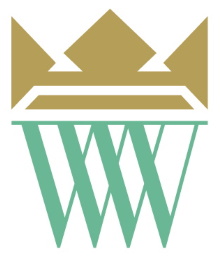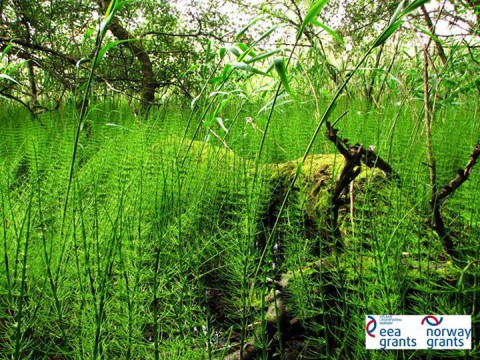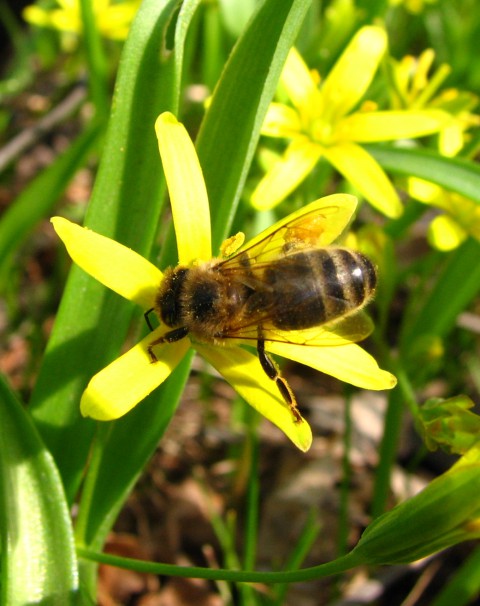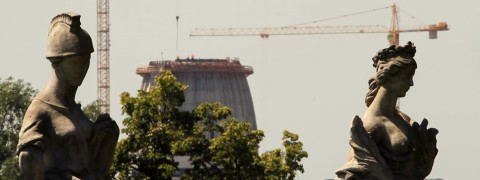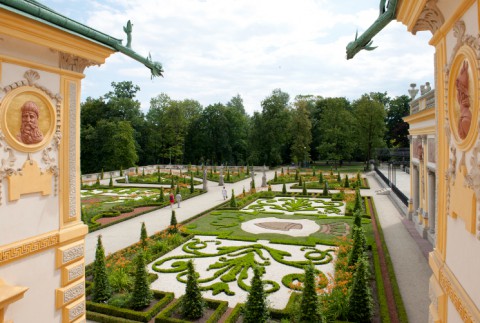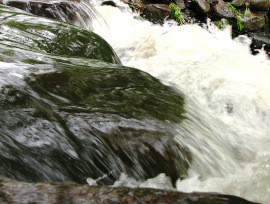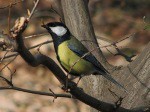Debates report
On October 9th in the Wilanów palace a public debate was held on the Morysin Nature Reserve which is located on the grounds of the Museum of King Jan II’s Palace at Wilanów. The meeting was attended by over 30 people - environmentalists, naturalists, professors of biology, Wilanów district councillors and neighbours – passionately interested in the fate of this unique nature reserve located just 10 kilometres from the centre of the metropolis.
Morysin is an extraordinary meeting place for culture and nature. On one hand, it is a historical area where you can find the remains of the nineteenth-century constructions of the landscape park, on the other hand – a wild, rarely visited place with its own microclimate. A biodiversity area.
The importance of biodiversity for towns was stressed by prof. Joanna Pijanowska of the Faculty of Biology at the University of Warsaw. She pointed out that greenery in urban areas and their biodiversity generate both economic benefits and psychological advantages for inhabitants. Noticing that the share of green areas in the West and South of Europe is growing and decreasing in Eastern Europe, she postulated a smart and well-thought protection of urban biodiversity.
The next speaker was Dr. Peter Szpanowski, deputy director of the Museum of King Jan III’s Palace at Wilanów. He outlined a brief, yet rich history of Morysin park, and then focused on the current problems related to the legal protection of the place.
Over the years, admission to Morysin was prohibited until its protection plan would be adopted. In September 2014, the plan has been published and came into force – the entry ban was lifted and interpretive walks were marked, the nature reserve opened up for local residents and visitors of the museum. In his speech, the director Piotr Szpanowski stressed how important this was for the museum, which has long sought the possibility of using the place for education and tourism. The provisions of the plan can be read here.
The third of the guest speakers was dr. Michał Falkowski of EcoFalk (Bureau for environmental studies, monitoring & protection), who in concentrated his speech around the natural advantages of Morysin. He has noticed that although the reserve is located in a big city, with no shortage of biologists and/or nature experts, the ecosystem of Morysin has not yet been properly studied. Now, with all rules of the park in place, this task will be much easier.
The keynote presentations were followed by a discussion covering the following topic:
Protection of urban green areas
Professor Ewa Symonides advocated strict prohibition of introduction of non-native and exotic species, which carry pests to the city. Referring to the bans, Moreover she pointed out that too many bans in Polish nature reserves do not help protect these places. In her opinion, people - in order to protect the environment - must first know, tame and love nature – and only then protection may become something natural and not just a formal duty.
Wilanów Lake Revitalisation
There are a lot of controversies and doubts concerning the area around the Wilanowskie lake – the land admittedly belonging to the museum, while the lake is owned by the State Treasury, and all decisions concerning the protected part of the Wilanowskie lake are in the hands of the voivodeship marshal. In the discussion on this - somehow ownerless - part of the reserve, it was pointed out that the Wilanowskie lake was not just water but also a complex ecosystem which requires protection too. At this point curator Agnieszka Lauda ensured that the museum would do their best to protect the nature and revitalise the aquatic life in the waters of the Wilanowskie lake.
Anthropogenic impact on environment and urban-planning pressures
For ages the Morysin park has been adapting to the rhythm of the environment. However, the speed of this transformation has never been as quick as it is today, when the city is trying to subordinate the nature to urban rules, while the interest of the two are frequently conflicting. It was noted that soon in the vicinity of the nature reserve two large shopping centres will be build, and 1.2 kilometres from the park goes the new Southern Bypass route of Warsaw. Curator Agnieszka Lauda has pointed out that the museum does not intended to hamper the development of the city, and it obviously must reconcile the urbanisation pressure with the natural rhythm of nature. Therefore, professors from different disciplines are invited to the project to help build the knowledge-based society, which is necessary for the protection and preservation of heritage.
Organisation of a cycle of regular debates on the Wilanów and its nature
This was a postulate of Mr. Andrzej Budzyk, an expert in geology. At this point Miss Martyna Sowińska – the curator of the bio-diversity debate programme – ensured that the debates on nature would be continued. Two more debates were planned within the project by the end of 2014 and three more in the year 2015.
The debates take place within the Project “Social education in the conflict between urbanisation and ecology in the Wilanów Palace Museum” supported by Iceland, Liechtenstein and Norway under theEuropean Economic Area Financial Mechanism.
Debate 2: Social & ecological context of the Wilanów bees
Perfectly organised, extremely hard-working, disciplined, and very useful at that – bees!
Recently we have been noticing them more frequently, we care for them more, try to prevent their extinction. And we are right, because their contribution to human life is not limited to the production of honey, which so many of us love. This contribution is quite fundamental. The nature we know could not survive without bees. Bees are responsible for maintaining the bio-diversity. It is thanks to them we do not starve.
They also live in the Wilanów park and gardens, and for them we regularly sow hay meadows. We also want to know them better, which is why we invited you to this debate on the social and ecological role of bees.
On November 13 2014 we met in the Wilanów palace with over 80 people who care for bees: beekeepers, urban activists, environmentalists, students of natural sciences and persons from many other fields, who have something in common – they care for bees and want to offer them the best possible living conditions.
The usefulness of bees was discussed by Anna and Lech Krzysztofiak. They emphasized that wherever we want plants to bear fruit, we need bees There is no other way to maintain a healthy balance in the nature. However, we should be aware of the fact that the world we have created around us often is deadly to insects, so we should pay more attention to the impact we have on our environment.
Then Ms Katarzyna Jagiello of Greenpeace spoke about bees in the city. She presented solutions that could be used in urban areas and which are safe for both bees and people.
Doctor Piotr Rapiejko presented a slightly different approach presented. He examined the issue of the bee venom allergy. He talked about the allergen and the allergic reactions, but also explained how to deal with them. He ended by saying that instead of being afraid of bees we should respect them.
Dishes - unusual today but characteristic for the traditional Polish cuisine - e.g. fish with honey were discussed by prof. Jarosław Dumanowski, who presented how honey was served in the times of King Jan III. During the break the visitors had the opportunity to taste different types of honey and listen to Mr. Maciej Nowicki the Wilanów master chef.
Then the guests of the meeting joined a heated debate, which in sweet and pleasant atmosphere lasted more than an hour.
Debate 3: In the neighbourhood of a big city
Wilanów is a place combining culture and nature, rich centuries-old history and dynamic present. From a quiet village near Warsaw, where you could find respite from the hustle and bustle of the city, it has become a major part of the capital, adapting to the rhythm of the environment. However, the rhythm has never been as fast as it is today, when the city is imposing its rules on the nature, often causing conflicts.
The pressure exerted by the city on Wilanów located on it outskirts, was the topic of the debate on December 11, with the inhabitants of the district, architects, developers and decision makers on construction projects in Wilanów.
Dr. Kinga Rybak-Niedziółka from the Department of Landscape Art at the University of Life Sciences, an architect and town planner, focused on the identity of the Wilanów district, which combines the identity of the inhabitants of the old Wilanów with that of the new residents of the Western part of the district, called Miasteczko Wilanów. Discussing the sources of this identity, the speaker drew attention to the symbols of the district - the palace of King Jan III and the St. Anne's Church strongly associated with the old Wilanów and the Temple of Divine Providence as a symbol of the new Wilanów, a supra-local symbol introducing a completely different kind of aesthetics than the dominant in the old part of the district. At the end of the intervention, a question was asked whether Miasteczko Wilanów was developing a new identity or just complementing the one of the old Wilanów?
The district’s identity has been further developed by Ms Agnieszka Kowalewska, a landscape architect and town planner of URBIOSIS Designing Bureau, who in the years 2002–2007 was a designer of public greens in Miasteczko Wilanów. When analysing the zone, the speaker stressed the shortage of greens and recreation areas in Miasteczko Wilanów. At the same time she showed extensive areas of the old Wilanów, which could compensate this shortage, if properly developed, maintained and open for the district residents. She concentrated on the Morysin nature reserve, postulating that it should become a more open space. The speaker proposed changing the type of protection – from passive to pro-active. For the benefit of both the residents and the nature, the no entry signs should be replaced with educational routes, while the pro-active protection should be jointly provided by the administrators of the area and the users.
In response Piotr Szpanowski - deputy director of the Museum of Jan III’s Palace at Wilanów – informed about the protection plan for Morysin adopted on September 19 2014 which regulates the admissions and activities in the reserve.
Ms Katarzyna Radzikowska, a member of Association of Residents of Miatseczko Wilanów and district councillor, spoke about the social aspect of physical planning in Wilanów. She pointed out the need to create public space in a way which could facilitate residents integration, meetings and joint activities. This applies both to construction and green areas.
Speaking from the perspective of the residents of Miasteczko Wilanów, she ensured that the goals of the newcomers are identical to the aims of the indigenous inhabitants of Wilanów – they all are aware of the place where they reside, its cultural and natural advantages, and they want to preserve them while further developing the district.
In his introduction to the discussion director Paweł Jaskanis of the Museum of King Jan III’s Palace at Wilanów, reminded that the Wilanów residence combines culture and nature, and presented the approach of the museum to its neighbourhood – an approach based on a contact or even a collision between biodiversity and urbanization. Maintaining biodiversity is a need not only for the museum as one of the guardians of Morysin nature reserve, but equally for all the residents of the district. It is a common goal, a common need, but also a common problem. This requires discussion, priority setting, turning towards the future and the quality of the future life as well as the open approach and mutual consultation. The museum's director stated that Wilanów was a unique place, not because of the palace, but because of the population - a quarter with the best level of education in the entire country. Public space planning is a task for all residents of Wilanów, they can and should decide on what district they want to live in.
The speeches was followed by a long, dynamic and constructive discussion. A lot of key questions were asked. It was a clear proof of residents’ involvement in major issues of the Wilanów district.
Debate 4: “Historic gardens: revitalisation and reconstruction”
Historic, ancient and venerable – these qualities certainly suit the royal garden at Wilanów. It can also be described as unique, charming, picturesque, and even inspiring to creative activities! Its present look has been achieved through revitalisation and reconstruction works conducted in recent years. Their effects were discussed during the debate held as part of the project
“Social education in the conflict between urbanisation and ecology at the Wilanów Palace Museum.”
The debate was attended by
Paweł Jaskanis, Head of the Museum of King Jan III's Palace at Wilanów,
Agnieszka Laudy, PhD, Custodian of the project “Social education in the conflict between urbanisation and ecology at the Wilanów Palace Museum.”
Ewa Jakubowska-Smagieł, Specialist at the Digitalisation and Documentation Department of the Museum,
Łukasz Przybylak, Head of the Garden Department of the Museum.
The attending guests could familiarise themselves with the over-300-year history of the Wilanów Gardens. They were taken on a florid verbal and visual trip by Łukasz Przybylak, Head of the Garden Department. As a specialist in historic gardens maintenance and revalorising, he also acquainted the participants with the notion of revalorisation. Elaborating on this topic, he paid special attention to the word “compromise” which is essential to the revalorisation process, making the historical requirements and contemporary visitors' expectations meet half way. He further stressed that valorisation is of an interdisciplinary nature, combining the knowledge of general history and the history of architecture and horticultural art with geology, stone and wood maintenance, geotechnics and hydraulics. The activities carried out in these fields are driven by a common goal, i.e. to restore the original and historical values.
Paweł Jaskanis, Head of the Museum, talked about the numerous revitalisation works undertaken over the last 12 years, with the aim of bringing the garden back to its previous splendour. He pointed to the complexity of this issue, given that the Wilanów Gardens and parks currently feature not only Baroque elements, but also elements reflecting other historic periods, introduced by individual Palace owners (e.g. the English garden and the English-Chinese garden). He further emphasised the role of discussion meetings addressed to the Museum guests, enabling them to learn about the phenomenon of this unique place. The participants expressed their willingness to take part in more detailed meetings devoted to the Wilanów Gardens, and the Head of the Museum promised to organise them in the upcoming spring.
The use of modern technologies in revitalisation works was discussed by Ewa Jakubowska-Smagieł, whose duties include conducting study works that begin the revitalisation process. The participants could find out about the ways of combining historical sources and modern methods, and about the substantial advantages this combination brings to both revitalisation and normal repair work. The magnolias growing near the Palace aroused obvious interest among the attendees. Ms. Ewa Jakubowska-Smagieł talked about the attempts to propagate this species, with a view to preserving these impressive plants. Our intent is to revive them at Wilanów and to display them next to the fig house, close to the Orangery. This is where the climate will foster their development and appropriate display.
Following the debate, the attendees went for a walk to explore the utilitarian and fruit garden, also reconstructed as part of the project “Social education in the conflict between urbanisation and ecology at the Wilanów Palace Museum.”
The debate on “Wilanów’s biodiversity throughout the centuries. Historic gardens: revitalisation and reconstruction” was held within the framework of the project “Social education in the conflict between urbanisation and ecology at the Wilanów Palace Museum,” implemented with the support provided by Iceland, Liechtenstein and Norway as part of the Financial Mechanism of the European Economic Area.
Debate 5: Water – the source of life or destruction?”
The debate took place on 19 November 2015. This time we focused on water-related issues, using the example of the Wilanów Lake. The discussion was inspired by the disturbing condition of the water basins and watercourses located within the Museum area. In recent months their quality has declined considerably.
The meeting was opened by Paweł Jaskanis, Head of the Museum of King Jan III's Palace at Wilanów, who talked about the activities and efforts made by the Museum with a view to monitoring the condition of the waters within the Museum area, and restoring their cleanness. He also mentioned the formal difficulties related to such attempts, including the appurtenance issue of the local waters and the areas they run through. Talking about the years during which the waters were polluted and neglected by various institutions, which were expected to take care of their quality, Mr. Jaskanis summarised his speech by claiming that the environment ceased to defend itself, the consequences of which are yet to be faced.
Then, the floor was taken by Agnieszka Laudy, PhD, Custodian of the project “Social education in the conflict between urbanisation and ecology at the Wilanów Palace Museum.” She spoke about the underlying objectives of the project and outlined the activities that had been carried out to date. The she elaborated on the condition of the Służewiec stream, the pollution of which had considerably increased between February and August 2015. The Museum had taken several measures in this field, which were presented in detail by the project custodian.
Another speaker, Prof. Joanna Pijanowska, from the Faculty of Biology at the University of Warsaw, also referred to the water quality of the Służewiec stream. In her presentation, she spoke about the chemical water content of the Służewiec stream and the Wilanów Lake, into which the stream flows. She also made the attendees aware of the real and tangible consequences and effects these chemical compounds have on the environment.
Then, Teresa Ozimek, PhD, cooperating with the Department of Hydrobiology within the Faculty of Biology at the University of Warsaw, took the floor. She focused on the plant species in the Wilanów Lake and their changes throughout the years. Referring to specific examples, she spoke about the consequences of those changes to the biodiversity of the Wilanów Lake ecosystem.
Andrzej Kołodziejczyk, PhD, from the University of Warsaw, was the last speaker who talked about the diversity of the invertebrate macro-fauna of the Wilanów Lake. In his speech, he addressed the following questions: How is lake biodiversity analysed? What are the possible behaviour patterns of the lake and its living world? What are the mechanisms of colonising water basins by foreign species? What problems can be caused by the representatives of certain species?
These speeches were followed by a discussion with the meeting participants, which also touched on an extremely important topic for Wilanów, i.e. the possible ways of preventing further water degradation.
The debate on “Water – the source of life or destruction?” was held within the framework of the project “Social education in the conflict between urbanisation and ecology at the Wilanów Palace Museum,” implemented with the support provided by Iceland, Liechtenstein and Norway as part of the Financial Mechanism of the European Economic Area.
Debate 6: A bird’s-eye perspective
On 24 September 2015 the Museum of King Jan III's Palace at Wilanów housed a meeting with bird enthusiasts, who talked about the winged residents of the Wilanów Gardens.
The first speech was given by Marek Elas, an ornithologist by both education and passion, and a bird-banding specialist, who graduated from the Faculty of Forestry at the Warsaw University of Life Sciences (SGGW) in Warsaw. He conducts studies of the Wilanów birds as part of the project “Social education in the conflict between urbanisation and ecology at the Wilanów Palace Museum.” He drew the attendees' attention to the fact that the Wilanów park is extremely significant in terms of ornithology, as it features extensive water areas and old trees which create favourable living conditions for birds. Old trees provide wide access to natural hollows, although the artificial ones, i.e. nest boxes, are also numerous. Bird-watching activities at Wilanów are aimed at protecting the environment. However, to ensure adequate protection, the environment firs needs to be explored, in order to find out about the inhabiting species and their preferences as to the living conditions. Bird-watching will continue until March 2016. So far as many as 37 species have been identified in the Wilanów Gardens, including 32 terrestrial species and 5 water species.
Following the presentation devoted to the natural environment, the attendees moved to the Palace to search for birds there. A speech on decorative bird motives inside the Palace was given by Monika Klimowicz, an archaeologist and a member of the Polish Society For the Protection of Birds. She cooperates with “Plamka mazurka” - a blog disseminating knowledge of birds. Presenting historical objects, she engaged the meeting participants in a game, asking them tricky questions about various bird species. The Palace decorations turned out to be rich in bird motives, including not only domestic but also numerous foreign species.
The last speaker, Julia Dobrzańska, working for the Education Department of the Wilanów Museum, spoke about the environmental education activities conducted by the Museum of King Jan III's Palace at Wilanów, which combine culture with nature. These comprise natural-environment-oriented meetings for children and adults, walks around the park and the Morysin nature reserve, and workshops during which historical information is presented along with contemporary knowledge, as well as with advanced ornithological education, including winter bird-counting and bird-banding. The Wilanów environmental-education programme is full of bird motives that inspire great interest among visitors, both children and adults.
The speeches were followed by a thought-provoking discussion with the meeting participants. Questions about the project “Social education in the conflict between urbanisation and ecology at the Wilanów Palace Museum” and its outcomes were asked long after the end of the debate.
The debate on “A bird’s-eye perspective” was held within the framework of the project “Social education in the conflict between urbanisation and ecology at the Wilanów Palace Museum,” implemented with the support provided by Iceland, Liechtenstein and Norway as part of the Financial Mechanism of the European Economic Area.
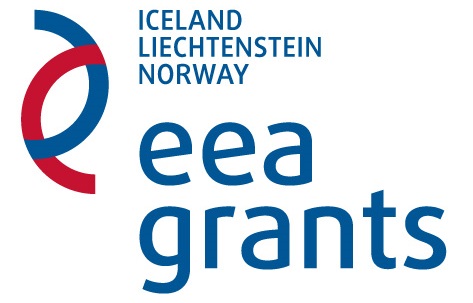 The support received from the European Economic Area Financial Mechanism 2009-2014 allowed us to develop the project “Social education in the conflict between urbanisation and ecology at the Wilanów Palace Museum”.
The support received from the European Economic Area Financial Mechanism 2009-2014 allowed us to develop the project “Social education in the conflict between urbanisation and ecology at the Wilanów Palace Museum”.
suggested

Conference summarising the project
A national conference summarising the project “Social education in the conflict between urbanisation and ecology at the Wilanów Palace Museum” implemented with the …

Social education in the conflict between urbanisation and ecology - gallery
Four seasons in Wilanów Gardens The support received from the European Economic Area Financial Mechanism 2009-2014 allowed us to develop the …

Social education in the conflict between urbanisation and ecology – selected project activities
Debates A cycle of debates which comprise meetings with residents and discussions on the issues of the intrinsic connection between mankind …

The intimate life of birds
The intimate life of birds – a fragment of an interview with ornithologist Marek Elas What makes bird-watching so fascinating? The best …

